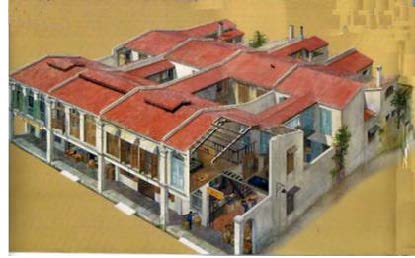Heritage Conservation as Green Development at the George Town World Heritage Site
Main Article Content
Abstract
George Town was inscribed as a UNESCO World Heritage Site in 2008. The conservation of heritage buildings is based on the principles of green development. The characteristic shophouses, built since the 1790s, used locally sourced and eco-friendly materials such as clay bricks, terracotta tiles and timber in designs suitable to the climate, culture and geology to create naturally cool interiors with low energy use. Modern materials such as cement, concrete, steel, glass and plastic consume more energy in their production, are poorly suited to the climate and geology, and pose threats to traditional-style buildings. Conserving the heritage buildings using traditional materials and conforming to the traditional deisgn principles minimises the contribution to global warming and the depletion of the earth’s stock of natural materials.
Article Details
References
ICOMOS Australia. 2013. The Burra Charter: The Australia ICOMOS Charter for
Places of Cultural Significance. Burwood: ICOMOS Australia. https://australia.icomos.org/wp-content/uploads/The-Burra-Charter-2013-Adopted-31.10.2013.pdf
Penang Town and Country Planning Department. 2016. Special Area Plan for George Town World Heritage Site.
Pearson, R. 2000. “Rethinking Gender Matters in Development.‟ In T. Allen and A. Thomas (eds.), Poverty and Development into the 21st Century. Oxford: Oxford University Press.
Gwynn Jenkins and Tan Yeow Wooi. 2013. Introduction to Heritage Building Materials. Penang: GTWHI. https://gtwhi.com.my/wp-content/uploads/2019/04/Introduction-to-Heritage-Building-Materials_Timber.pdf


